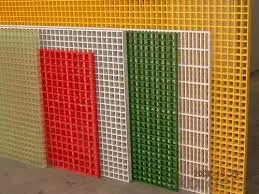
-
 Afrikaans
Afrikaans -
 Albanian
Albanian -
 Amharic
Amharic -
 Arabic
Arabic -
 Armenian
Armenian -
 Azerbaijani
Azerbaijani -
 Basque
Basque -
 Belarusian
Belarusian -
 Bengali
Bengali -
 Bosnian
Bosnian -
 Bulgarian
Bulgarian -
 Catalan
Catalan -
 Cebuano
Cebuano -
 China
China -
 China (Taiwan)
China (Taiwan) -
 Corsican
Corsican -
 Croatian
Croatian -
 Czech
Czech -
 Danish
Danish -
 Dutch
Dutch -
 English
English -
 Esperanto
Esperanto -
 Estonian
Estonian -
 Finnish
Finnish -
 French
French -
 Frisian
Frisian -
 Galician
Galician -
 Georgian
Georgian -
 German
German -
 Greek
Greek -
 Gujarati
Gujarati -
 Haitian Creole
Haitian Creole -
 hausa
hausa -
 hawaiian
hawaiian -
 Hebrew
Hebrew -
 Hindi
Hindi -
 Miao
Miao -
 Hungarian
Hungarian -
 Icelandic
Icelandic -
 igbo
igbo -
 Indonesian
Indonesian -
 irish
irish -
 Italian
Italian -
 Japanese
Japanese -
 Javanese
Javanese -
 Kannada
Kannada -
 kazakh
kazakh -
 Khmer
Khmer -
 Rwandese
Rwandese -
 Korean
Korean -
 Kurdish
Kurdish -
 Kyrgyz
Kyrgyz -
 Lao
Lao -
 Latin
Latin -
 Latvian
Latvian -
 Lithuanian
Lithuanian -
 Luxembourgish
Luxembourgish -
 Macedonian
Macedonian -
 Malgashi
Malgashi -
 Malay
Malay -
 Malayalam
Malayalam -
 Maltese
Maltese -
 Maori
Maori -
 Marathi
Marathi -
 Mongolian
Mongolian -
 Myanmar
Myanmar -
 Nepali
Nepali -
 Norwegian
Norwegian -
 Norwegian
Norwegian -
 Occitan
Occitan -
 Pashto
Pashto -
 Persian
Persian -
 Polish
Polish -
 Portuguese
Portuguese -
 Punjabi
Punjabi -
 Romanian
Romanian -
 Russian
Russian -
 Samoan
Samoan -
 Scottish Gaelic
Scottish Gaelic -
 Serbian
Serbian -
 Sesotho
Sesotho -
 Shona
Shona -
 Sindhi
Sindhi -
 Sinhala
Sinhala -
 Slovak
Slovak -
 Slovenian
Slovenian -
 Somali
Somali -
 Spanish
Spanish -
 Sundanese
Sundanese -
 Swahili
Swahili -
 Swedish
Swedish -
 Tagalog
Tagalog -
 Tajik
Tajik -
 Tamil
Tamil -
 Tatar
Tatar -
 Telugu
Telugu -
 Thai
Thai -
 Turkish
Turkish -
 Turkmen
Turkmen -
 Ukrainian
Ukrainian -
 Urdu
Urdu -
 Uighur
Uighur -
 Uzbek
Uzbek -
 Vietnamese
Vietnamese -
 Welsh
Welsh -
 Bantu
Bantu -
 Yiddish
Yiddish -
 Yoruba
Yoruba -
 Zulu
Zulu
frp chimney
Exploring FRP Chimneys Advantages and Applications
In recent years, Fiber Reinforced Polymer (FRP) chimneys have emerged as a popular choice for various industrial applications. Striking the right balance between durability, cost-effectiveness, and ease of installation, FRP chimneys offer a modern solution to traditional chimney materials such as concrete and steel. This article explores the advantages of FRP chimneys and their applications across different industries.
One of the primary advantages of FRP is its exceptional resistance to corrosion. Traditional chimneys, especially those exposed to harsh environmental conditions, often suffer from deterioration due to corrosive substances emitted from industrial processes. On the other hand, FRP chimneys are manufactured from composite materials that are resistant to chemical degradation. This durability significantly extends their lifespan and reduces the need for frequent replacements or repairs, ultimately leading to cost savings for businesses.
Exploring FRP Chimneys Advantages and Applications
Thermal efficiency is another important feature of FRP chimneys. Unlike metals, which can conduct heat, FRP materials exhibit superior insulating properties. This thermal resistance means that temperatures within the chimney can be managed more effectively, reducing the possibility of condensation and the associated problems of corrosion and premature failure. In applications where hot gases are emitted, maintaining optimal temperature conditions can prolong the functionality of the entire system.
frp chimney

In addition to performance benefits, FRP chimneys also offer aesthetic advantages. Available in a variety of colors and finishes, they can be designed to blend seamlessly with the surrounding architecture. This flexibility makes them an appealing choice for facilities that are concerned about maintaining a pleasing visual appearance while adhering to operational necessities.
Moreover, the versatility of FRP chimneys extends to their customization options. They can be made in various sizes and configurations to meet specific operational needs. Whether it’s a small facility or a large manufacturing plant, FRP chimneys can be tailored to handle different flow rates and emissions, ensuring compliance with environmental regulations.
Environmental considerations are increasingly influencing material choices in construction and industrial applications. FRP chimneys contribute positively to sustainability goals by being recyclable and often incorporating recycled materials in their production. This aligns with the growing emphasis on reducing environmental footprints in modern industrial practices.
In conclusion, FRP chimneys represent a forward-thinking solution that combines durability, design flexibility, and economic efficiency. Their resistance to corrosion, lightweight nature, thermal efficiency, and aesthetic appeal make them a favored choice for industries ranging from power generation to chemical manufacturing. As businesses continue to seek advanced materials that not only meet technical requirements but also align with sustainability goals, FRP chimneys are likely to see continued growth in their application. Transitioning to such innovative solutions represents a commitment to both operational efficiency and environmental responsibility in today's industrial landscape.









